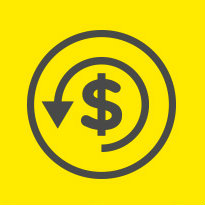
- Three minutes read
Five ways to reduce your chargebacks
Chargebacks occur for a variety of reasons including fraudulent use of a credit card, dissatisfaction with service or merchandise, and duplicate charges.
Chargebacks are one of the most unglamorous sides of the payments business. They instill dread and frustration in most merchants on a monthly, weekly and even daily basis, but there are ways to reduce and sometimes even eliminate chargebacks.
The chargeback system was established by the card associations as a means to resolve conflicts between cardholders and merchants, with chargeback rules governed by card associations like Visa and MasterCard. Chargebacks occur for a variety of reasons including fraudulent use of a credit card, dissatisfaction with service or merchandise, and duplicate charges. They can be initiated by either the cardholder or a cardholder’s bank.
The time period during which a transaction may be charged back is limited by card associations.
There are several different types of chargebacks:
- Criminal Fraud – When a stolen card is used to make a purchase.
- Merchant Error – When the merchant makes a clerical error such as duplicate or incorrect billing amount.
- Service Error – When a company has poor return policy procedures, misrepresentation of product or services not fully delivered to client’s satisfaction.
- Friendly Fraud – When a customer has buyer’s remorse and changes their mind or does not recognize the charge on their billing statement due to descriptor or difference in currency.
For a merchant, chargebacks are the dreaded headache, but you can help reduce chargebacks and alleviate concerns by following these five steps:
1. Implement fraud filters
There are two standard security and fraud filters in the market that merchants can use today.
Address Verification System (AVS) – AVS verification requires cardholders to include their billing address along with the card information when running a card-not-present transaction. The address is then compared to bank records and then assigned a code based on how close the address matches the bank record. Merchants can then choose to automatically decline transactions based on their AVS code. It is advised that merchants only accept transactions that have valid AVS responses.
Card Verification Code (CVC/CVV2) – Card Verification Code filtering is much more straightforward than AVS verification. The CVC/CVV2 code is the three-digit security code that is listed on the back of every credit card. CVC/CVV2 verification requires the customer to enter the code along with the rest of the card information when attempting a transaction. The code is then compared to bank records. Unlike AVS, there are no varying degrees of similarity. The code either matches or it doesn’t. A CVC/CVV2 match typically indicates that the cardholder has the card in his or her possession during the transaction, thereby reducing the possibility of fraud. As such, merchants are advised to automatically decline transactions with CVC/CVV2 mismatches.
2. Use clear and properly formatted statement descriptors
One thing to consider for chargebacks is the possibility that a customer simply does not recognise a transaction as it appears on their statement. This is almost exclusively confined to card-not present transactions and almost always has to do with poor descriptors. Simply put, a merchant’s descriptor – the transaction description that appears on the customer’s statement – should be easily relatable to the merchant’s business name.
A merchant doing business as 'John’s Store' should not have a descriptor reading 'Sara’s House.' This leads to customer confusion and chargebacks. In cases where a merchant’s descriptor is significantly different from the business name, such as in the case of large corporations with multiple DBAs, ('doing business as' name) descriptors should include the DBA name and website or product name such that the customer will easily recognise the transaction.
In addition to this, merchants should also notify customers about how a charge will appear on their statement. This can be done by providing a statement on the merchant’s website, or by sending out a confirmation email or phone call.
3. Employ risk rules/consulting
Risk and chargeback management is more than just technology. It is important to utilise your support team. Make sure to consult your payment processor on the ways that they can assist you in reducing your liability. At Paysafe, the first line of defence is our gateway. It includes global validation tests, real-time proprietary risk rules engine, and PCI Level 1 Compliance. Every business is susceptible to fraud. Verify that your payment processor has an in-house risk management team that can deploy and develop a customised and comprehensive fraud prevention strategy that suits your needs.
4. Use shipment tracking numbers and compare shipping/billing addresses
For merchants who deliver physical goods, it is crucial that shipment tracking numbers are used. The level of tracking, such as requiring signature confirmation, is largely up to the merchant’s discretion. Obviously, higher levels of tracking will be more expensive, but for certain large ticket merchants the added security is a worthy investment. Having tracking numbers is always a big help in the dispute process.
It is also advised that merchants compare customer billing and shipping addresses. While it is fairly common for the two to differ to varying degrees, merchants should be wary not to ship to addresses that greatly differ from their respective billing addresses – such as different states or countries. If a merchant does choose to ship to an outside address, additional verification steps should be taken such as calling the card issuer.
5. Make the refund process easy
Maintain a flexible refund policy and make the process easy. Customers should be able to make a simple request for a refund and have it processed within a reasonable time frame. It is therefore crucial that merchants have a fast and reliable customer service process and have the customer service contacts properly disclosed. One suggestion would be to include the customer service number or email as part of the statement descriptor so that customers know who to contact without having to search.
Once a refund is requested, customers should be notified as to how long they will have to wait before seeing the refund on their statement. As a rule, a shorter wait time is better. Requiring post-marked letters or Return Merchandise (RMAs) for refunds are poor business practice, and will lead to heightened chargebacks.
Once a refund is issued, it is important to keep a record of it. Customers should also be notified when a refund is issued and given the refund date as well as some means of tracking it. Furthermore, refunds should always be issued to the same card that made a transaction. A merchant should never issue a cheque in place of a credit card refund as it will not be recognized by the card associations.
Always be proactive
Understanding the reasons behind chargebacks empowers merchants to prevent future chargebacks. While there are many reasons for chargebacks, taking steps within the five main tips discussed here should ensure greater profitability and streamlined operations for the merchant.
With attentiveness and support from your payment processor, chargebacks can be reduced. Paysafe can support your chargeback management process and other best practices. Visit us today at processing.paysafe.com.




